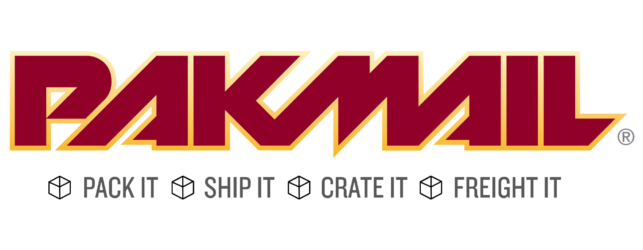Every now and then, a package arrives looking like it’s been through a whirlwind. Damaged boxes aren’t just disappointing—they can also lead to worry about their contents. Imagine waiting for weeks for a special item only to find it in pieces. Knowing how to handle this situation can save both time and trouble later on.
Knowing how to handle damaged goods aids in securing a replacement and helps in having a smooth interaction with sellers or delivery services. By arming yourself with practical steps and an organized approach, you can alleviate potential stress and make sure that the resolution process goes as smoothly as possible. This guide will walk you through the steps to take when faced with a less-than-perfect delivery.
Assess the Damage Upon Arrival
First things first, take a deep breath. When you see a damaged package on your doorstep, it’s natural to feel uneasy. But before you let that feeling overwhelm you, it’s crucial to act swiftly and methodically. This begins by carefully inspecting the package as soon as you get it.
1. Check for Visible Damage: Look at the package from every angle. Are there tears, dents, or holes? This information will be important later on.
2. Capture Evidence: Use your phone to snap clear pictures of the damages. Make sure to capture all angles, focusing on the damage spots. Having a visual record will prove invaluable when discussing the issue with sellers or shipping companies.
3. Retain All Packaging: Keep every piece of the original packaging and its contents. Packaging materials often serve as proof of shipping conditions and could be needed for insurance claims.
By taking immediate and thorough stock of the situation, you lay the groundwork for an effective solution process. Once you’ve assessed the initial damage, you’re ready to reach out to the seller or retailer.
Contact the Seller or Retailer
Once you’ve gathered all the necessary information, it’s time to reach out to where you bought the item. Clear communication here is key to getting a swift resolution. Approach them calmly, equipped with all the evidence you’ve collected.
– Provide Order Details: Make sure to include the order number, purchase date, and any specific item information in your communication. This helps the seller quickly locate your transaction.
– Describe the Damage: Use the photos you took to explain the issue. Attach the images in your email or online contact form so the seller can see exactly what went wrong.
– Follow Their Process: Retailers often have specific procedures for handling damaged goods. Be sure to ask about their policy on returns and replacements, and follow their instructions to the letter.
Acting swiftly and clearly with the seller increases your chances of a favorable and timely response. Once this step is completed, it is time to think about any insurance or claims that might apply to your shipment.
Understanding Insurance and Claims
After notifying the seller, consider whether shipping insurance applies to your damaged package. Shipping insurance serves as a safety net, ensuring compensation for items damaged in transit. If your package was insured, you have a higher chance of receiving compensation or a replacement swiftly.
– Review Insurance Details: Check the original purchase invoice or shipping receipt. This document will indicate if insurance was included and at what coverage level.
– Initiate the Claim Process: Reach out to the shipping company without delay. Provide them with all information about the damage, including photos and descriptions. Adhering to claims procedures ensures you don’t miss out on potential reimbursement.
– Communication is Key: Stay in touch with both the seller and shipping company throughout the claims process. Open communication keeps everyone in sync and may speed up the resolution.
Knowing your options when dealing with shipping claims turns frustration into resolution, so be proactive about understanding the insurance landscape.
Preventing Future Damage
While resolving the current issue is vital, thinking ahead to prevent future damaged packages can save you headaches down the road. Securing your items properly during transit can go a long way. Here’s how you can tackle it:
– Choose the Right Packaging Materials: Invest in sturdy boxes, cushioned padding, and strong tape. Quality materials are your first line of defense.
– Check Packing Techniques: Ensure your items fit snugly in their packages. Using bubble wrap or packing peanuts fills empty spaces and absorbs shocks.
– Select a Reliable Partner: Look for a trusted packing and shipping company in Colorado Springs. A professional service will prioritize item safety and have systems in place to minimize the chance of damage.
By taking these preventive steps, you can safeguard future shipments, giving you peace of mind that your packages will withstand the journey.
Managing Package Damage Claims Efficiently
Handling a damaged package may seem tricky, but with the right approach, you can manage it successfully. By assessing the damage promptly, communicating effectively with sellers, and understanding claim processes, you’ll be well-equipped to manage unexpected delivery issues head-on. Learning to work within the system ensures a smoother path to resolution.
Moreover, taking measures to enhance how things are packed plays a crucial role in preventing similar issues later on. As you engage with the complexities of shipping, remember that proactive steps today lead to more satisfying delivery experiences in the future. Understanding these processes not only assists you in specific situations but also empowers you to ship with confidence.
If you’re looking for peace of mind with your shipments, choose a trusted packing and shipping company. Pak Mail in Colorado Springs is dedicated to making sure your items are handled with care and precision so they arrive in the best condition possible. Contact us today to make a difference.

